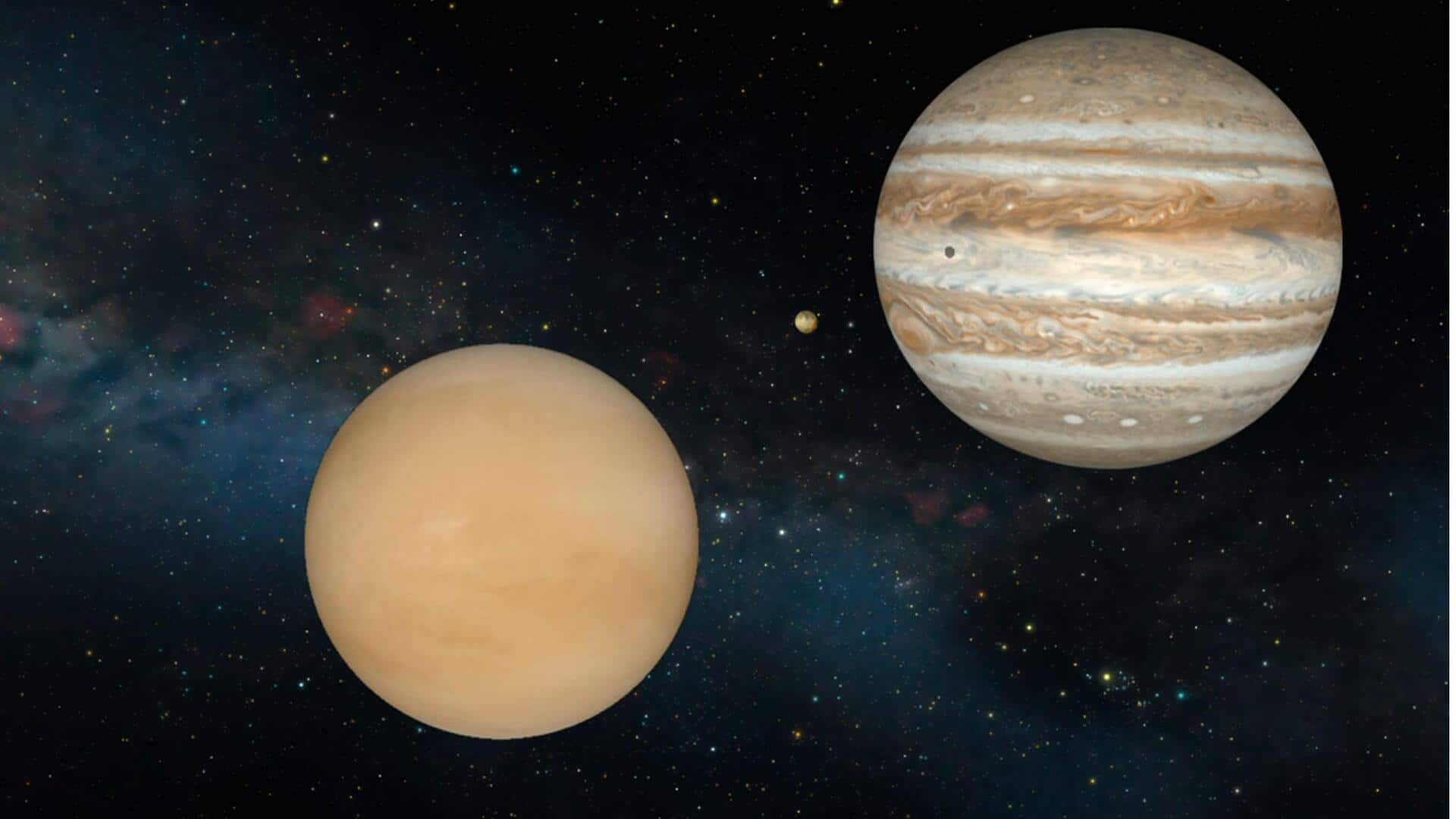
Jupiter, Venus, Saturn: How to spot these planets this month?
What's the story
As September progresses, stargazers are treated to a celestial spectacle. The two brightest planets, Jupiter and Venus, are gracing the morning sky. Jupiter rises just after midnight and dominates the south-southeast sky at dawn. Meanwhile, Venus dazzles in the east-northeast 2-3 hours before sunrise. However, those with a clear view toward the east will witness an even more stunning sight on September 19: a close conjunction of Venus with a slender crescent Moon and bright blue star Regulus.
Planetary alignment
Saturn will be visible all night
Saturn, meanwhile, will be easier to spot in the dark sky low in the east-southeast just a few hours after sunset. The ringed planet reaches opposition on September 21, making it visible all night and highest in the south soon after midnight. Mars will be a bit more challenging to spot as it battles evening twilight and low altitude. The red planet can be seen in the west-southwest sky shortly after sunset.
Movement
Mercury and Venus will shine bright
Mercury is rapidly moving into the Sun's glare, transitioning from the morning to evening sky. It will be too close to the Sun's glare for visibility in mid-northern latitudes throughout September. Venus shines with its usual bright white light but now appears as a small, featureless gibbous disk in telescopes. The planet speeds across Cancer and Leo during this month and has notable conjunctions with stars today and tomorrow.
Sighting
Mars and Jupiter will also be visible
Mars is in its final full month of visibility, setting before the end of evening twilight. On September 12, it will pass two degrees to the upper right of bluish star Spica. Jupiter rises after midnight and shines brightly at magnitude -2.1 with its four moons visible even through small telescopes. A waning crescent Moon will be seen in eastern sky a few hours before sunrise on September 16, and shining 4.5 degrees to its lower right will be Jupiter.